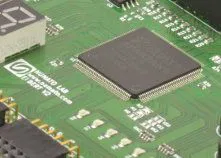Table of Contents:
Manipulating recordings, cutting, copying, applying effects, changing tonality, speed or direction – it’s all fascinating. Today, DACs and a bit about music from RPi in general.
Raspberry Pi DAC - what is it and what is it used for?
The Raspberry Pi does a great job with music when it uses an external audio interface. The snag is that we can say that about many different devices. The key is to use the right digital-to-analog converter to use the Raspberry as a full-fledged music playback device.
DAC audio conversion, or digital to analog conversion
Analog-to-digital conversion (ADC) is an electronic process in which a continuous or analog signal is converted into a multilevel digital signal without changing its essential content. Today, however, we will look at what happens in the reverse case. How does audio data on a CD, MP3 or WAV file stop being data and become audio?
This magic is largely due to the digital-to-analog converter or DAC. When you listen to digital recordings, you are actually listening to an analog signal that has been converted from digital by the DAC. Sometimes you see it, sometimes you don’t – it’s a secondary issue.Let’s try to understand the process. When recording, the artist creates a soundtrack. Microphones pick up the sounds of voices and instruments as analog audio signals. Recording engineers record the analog signals as digital. Recording equipment uses analog-to-digital converters to convert analog signals into digital signals for storage, which now usually means storing them as digital signals in the form of digital audio files. During playback, the DAC decodes the recorded digital signals. The DAC then converts these signals back into an analog audio signal. The DAC sends the converted analog signals to an amplifier, and the amplifier in turn sends the music through headphones or stereo speakers.
Why you should take care of an external DAC
However, let’s return to this not-so-secondary issue. To begin with, it is important to understand what is going on inside a DAC with at least a few generalized observations. Although it converts a bit stream consisting of ones and zeros into analog signals, it does not always convert this bit stream into an analog signal according to a consistent timing sequence – these are the notorious timing errors. During playback, they manifest themselves as jitter, known in the music industry as jitter perceived as peculiar interference. This, of course, has a negative impact on the fidelity of the sound, and the music simply doesn’t sound as good as one might imagine at a live concert, for example. The internal DACs in most devices are not designed to deal with timing errors, so they generate more jitter. On the other hand, most external DACs are designed to reduce these errors. As a result, they more efficiently reassemble music from a bit stream consisting of ones and zeros. It’s no different with our beloved Raspberry Pi, where stereo modules, sound cards and HAT overlays rush to us with solutions – even though most of us wouldn’t expect any SBC, even the top ones, to emit high-quality sound.
Sound from the Raspberry Pi
The popular HiFiBerry brand has been offering high-quality DACs and other audio accessories for Raspberry Pi users for many years. You can count on technical support for the products especially for installation and configuration problems.
One suggestion is the HiFiBerry DAC+ ADC Pro sound card. It uses a Burr-Brown DAC solution – it’s a digital-to-analog converter currently from under the banner of electronics giant Texas Instruments. It has the commonly known RCA and 3.5mm jack connectors, as well as stereo input and output. Realistic quality is 192 kHz / 24 bit. The compatibility is pleasing, because it will work with any version of RPi to pair with GPIO 40-pin connector and is connected directly without additional wires. The 192 kHz/24 bit parameters are regarded in the community as quite high sound quality, which is sometimes used in professional audio recording, mastering and in high-quality files for audiophiles. Higher sampling rate and bit depth allow for more accurate sound reproduction. We can be tempted by amplifiers that allow up to 60W in two channels and quite a range of speakers. An interesting and recommended bestseller at a really good price is primarily IQaudIO modules, including IQaudIO DAC+.
There are quite a few possibilities, and the options for cooperation of individual models with Linux-based system releases, Raspberry Pi OS, RuneAudio, Volumio, Moode, PiCorePlayer, PiMusicBox or OpenELEC can really surprise.
SBC single board computers and music
Ok, let’s recap. Many SBCs, including the Raspberry Pi, have enough performance to play high-quality music, and even in high-resolution formats such as FLAC or WAV, all while using high sampling rates and bit depth. However, some of the more advanced features – like real-time audio signal processing – can be demanding for some SBCs. The Raspberry Pi was already regarded as highly functional a few years ago, when it became known as a multimedia device, for example with Kodi. HiFiBerry DACs then became a way to get around the small number of outputs. Attractively priced compared to dedicated audio devices, they’re a great option for those looking for a budget solution for music playback, and while they’re cost-effective solutions, they’re not that limited at all, as evidenced by the specs of the HATs, cards and DACs you’ll find at Botland.
How useful was this post?
Click on a star to rate it!
Average rating 5 / 5. Vote count: 1
No votes so far! Be the first to rate this post.





















